#ancient cemetery
Explore tagged Tumblr posts
Text
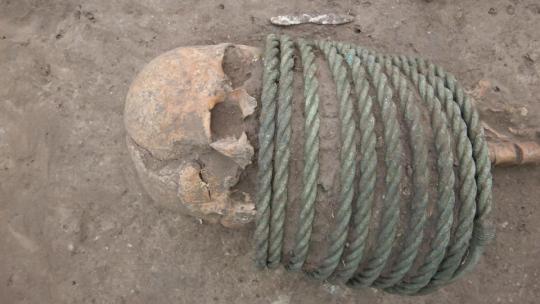
Skeletons With Rings Around Their Necks Uncovered at Ancient Cemetery In Ukraine
The discovery of a cemetery in Ukraine from a millennium ago has revealed axes, swords, jewelry and, unexpectedly, buckets around the feet of some of the dead.
Archaeologists in Ukraine have discovered a 1,000-year-old cemetery whose dead were buried with weapons, jewelry and, curiously, buckets around some of their feet.
The 11th-century cemetery is located about 50 miles (80 kilometers) south of Kyiv. Of its 107 graves, "most of the identified burials were deposed in wooden coffins," Vsevolod Ivakin and Vyacheslav Baranov, both archaeologists at the National Academy of Sciences of Ukraine, wrote in a paper they presented at the annual meeting of the Archaeological Institute of America, which was held Jan. 4-7 in Chicago.
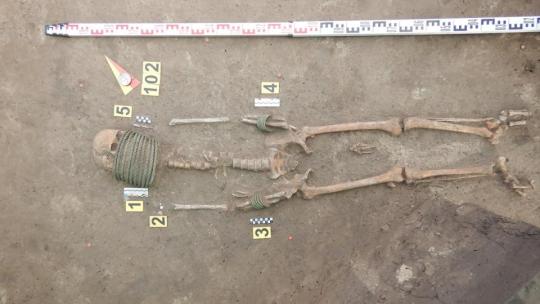
The cemetery's dead include both men and women. Some of the men were buried with weapons, such as axes, spearheads and swords, Ivakin and Baranov wrote. A few of the women were buried with elaborate neck rings, which "are found only on necks in female burials and were apparently a kind of social marker," in this region at the time, Baranov said in an email. Some of the people were buried with wooden buckets at their feet, which may have been part of funerary rituals. Other sites that have buckets within burials have been found in the region.
The archaeologists also found a stone altar, as well as bracelets, beads and the remains of food offerings, such as chicken bones and eggshells, among other artifacts. The altar could have been used for Christian or pagan rituals, or possibly both.
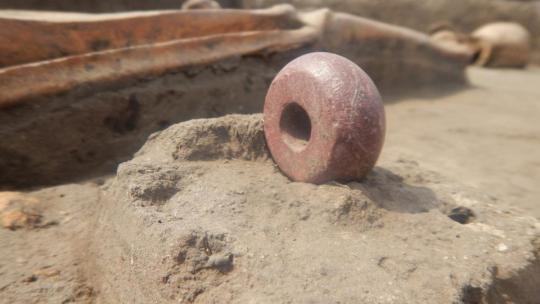
Some of the artifacts are similar to those found in the Baltic, hinting that some of the people buried in the cemetery might have come from that region to serve in the militaries of the rulers of Kyiv, such as Volodymyr the Great (who reigned from 980 to 1015) and Yaroslav the Wise (who reigned from 1019 to 1054), the archaeologists noted. The territories that Volodymyr the Great ruled stretched to the Baltic region.
At the time the cemetery was in use, people in Ukraine were converting to Christianity, the researchers said. This included Volodymyr the Great, who left behind his pagan roots and was baptized around 987 before his marriage to Anna, the sister of the Byzantine emperor Basil II.
The researchers excavated the cemetery between 2017 and 2022. The ongoing Russian invasion of Ukraine, however, has paused many excavations in Ukraine, including this one, the archaeologists said.
By Owen Jarus,

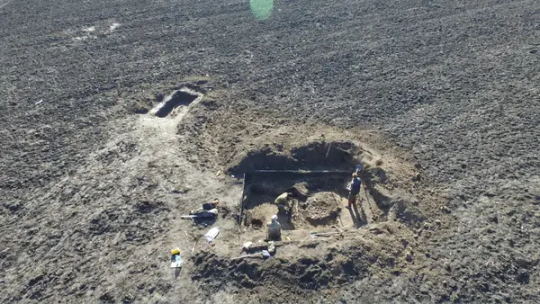
#Ukraine#Skeletons With Rings Around Their Necks Uncovered at Ancient Cemetery In Ukraine#ancient grave#ancient tomb#ancient cemetery#ancient artifacts#archeology#archeolgst#history#history news#ancient history#ancient culture#ancient civilizations
339 notes
·
View notes
Text



A couple of preserved large mounds of Krivichi on the field. The height of each is almost two meters or even more, the diameter is ten to twelve meters. The funeral rite is a corpse laying on the horizon. These mounds date back to the XI century
#spring#april#nature#aesthetic#cottagecore#naturecore#nature photography#nature aesthetic#photography#cottagecore aesthetic#cemetery#ancient cemetery#history#belarusian history#ancient history#spring photography#spring aesthetic#spring cottagecore
60 notes
·
View notes
Text
Yet more Roman graves under houses. This is starting to become a trope. Already is a trope. The fact of graves of any era under houses and roads and ... should be expected, I reckon. It IS Europe.
16 notes
·
View notes
Text
Unearthing Ancient DNA samples]
TEHRAN – A team of experts has extracted DNA samples from the remains of ancient humans buried in urn-like clay tombs, which were unearthed accidentally earlier this year in southwest Iran.
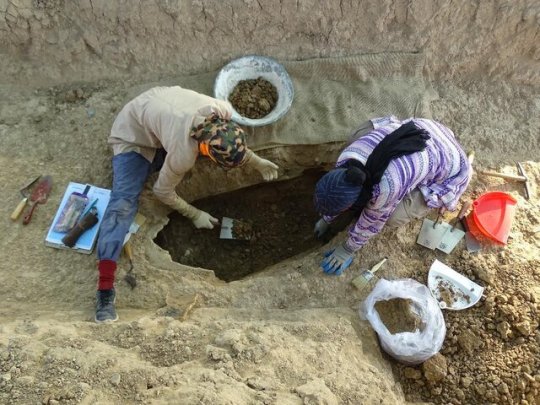
“The preliminary investigations show these burial urns can be dated from the Parthian and Sassanid eras, but for absolute dating, we have to wait for the results of dating tests on bone remains,” CHTN quoted archaeologist Loqman Ahmadzadeh as saying on Tuesday.

The discovery was made in the Kourosh neighborhood of Ahvaz last July when heavy machinery conducted excavations in the oil-rich region, the report said.
This rare and accidental discovery has provided an exceptional opportunity for archaeologists to conduct methodical research on the history of Ahvaz, the archaeologist said.
Ahmadzadeh added that the burial urns are of the torpedo-shaped type, whose inner surface is tarred, and the condition of the bones inside them shows a natural order and no confusion.

Among the burials, [the remains of ] a child were found…. On the forearm of its skeleton, a worn iron object was seen, which was probably the remains of a bracelet or bangle, the archaeologist noted.
In addition, samples of bitumen used in lining the inner surface of the vats will be analyzed in a laboratory to determine the origin and compare with similar cases in other contemporaneous sites, he said.
The Parthian Empire Parthian Empire (247 BC to 224 CE), also known as the Arsacid Empire, was a major Iranian political and cultural power in ancient Iran. The Parthians largely adopted the art, architecture, religious beliefs, and royal insignia of their culturally heterogeneous empire, which encompassed Persian, Hellenistic, and regional cultures. At its height, the Parthian Empire stretched from the northern reaches of the Euphrates, in what is now central-eastern Turkey, to eastern Iran.

The Sassanid era (224 CE–651) is of very high importance in the history of Iran. Under the Sassanids, Persian art and architecture experienced a general renaissance. Architecture often took grandiose proportions, such as the royal palaces at Ctesiphon, Firuzabad, and Sarvestan, which are amongst the highlights of the ensemble. In that epoch, crafts such as metalwork and gem engraving grew highly sophisticated, yet scholarship was encouraged by the state. In those years, works from both the East and West were translated into Pahlavi, the language of the Sassanians. In 2018, UNESCO added an ensemble of Sassanian historical cities in southern Iran — titled “Sassanid Archaeological Landscape of Fars Region”-- to its World Heritage list.
Ahvaz is the capital of Khuzestan province, which is home to three UNESCO World Heritage sites: Susa, Tchogha Zanbil, and Shushtar Historical Hydraulic System, among many other historical sites.
#Iran#ancient cemetery#archaeology#ancient history#Ancient Persia#Ahvaz Iran#Khuzestan#UNESCO#DNA extraction#ancient tombstone#Partian Empire#Sassanid Empire#Tehran Iran#ایران#امپراتوری اشکانی#امپراتوری ساسانی#گورستان باستانی
7 notes
·
View notes
Text






Abandoned Ming dynasty rural graveyard, Zhejiang.
Photo: © Aier闽
#ancient china#chinese culture#chinese architecture#ming dynasty#graveyard#cemetery#grave#gravestone#ancient tomb#tomb art#old cemetery#landscape#scenery#old china#chinese customs#chinese folk religion
395 notes
·
View notes
Text

Etruscan terracotta cinerary urn. 2nd century BCE
Museo Etrusco, Orvieto, Italy
March 2024
#etruscan#urn#ancient art#tomb#original photography#photography#taphophile#taphophilia#lensblr#photographers on tumblr#ancient history#archeology#archaeology#orvieto#italy#umbria#cemetery
206 notes
·
View notes
Text







Anglo-Saxon Cremation Pots from Cleatham Cemetery, North Lincolnshire Museum, Scunthorpe
#anglo saxon#archaeology#Anglo-Saxon culture#ancient cultures#ancient design#ancient crafts#pottery#pottery pieces#pottery fragments#Lincolnshire#cleatham cemetery#Scunthorpe
265 notes
·
View notes
Text




The Kerameikos in Athens. The most famous cemetery of ancient Athens. Grave relief of an uknown woman, classical grave markers and the tomb of a cavalryman Dexileos of Thorikos.
#athens#greece#grave#necropolis#graveyard#cemetery#landscape#ancient history#ancient art#bronze cauldron#greek#antiquities#ancient civilisations#archaeology#marble#art history#sculpture#ancient greece#male form#monument#kerameikos
103 notes
·
View notes
Text


Doğada aslan ruhlu komutanların tarafındayız... Büyük İskender ve birliklerinin fethedemediği sarp ve yüksek dağlarla çevrili kent... Siyasi oyunların bir parçası yüzünden kendini öldüren Savaşçı Alcetes'in anıt mezarının izinden...📷
Evet arkadaşlar biraz buralara gelmek istedim, çok eski dostlar görmek sevindirici, umarım iyisinizdir...
Ben işlerden fırsat buldukça doğadayım ve tek sonsuz mutluluğum işimin bir parçası doğa...
Termessos Antik Kenti, Antalya
#nature photography#nature photographer#ancient history#archaeology#tombstone#cemeteries#photooftheday#nature photoshoot#nature photo art#trekking
70 notes
·
View notes
Text

Cimitero dei burci, Casier
#dark academia#academia aesthetic#dark academia aesthetic#ancient#romantic#secret passages#lensblr#photographers on tumblr#original photography#original photographers#original photography on tumblr#Italy#water#cemetery#boat cemetery#burci#casier
30 notes
·
View notes
Text






Photos from the First Cemetery of Athens, Greece
#greece trip#scrapbook#mine#cemetery#the relief is my favorite since its so obviously based on ancient greek funeral reliefs
13 notes
·
View notes
Text
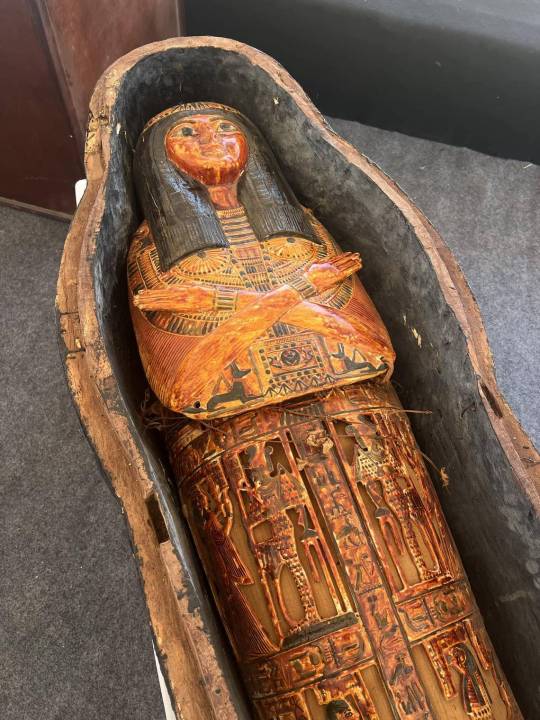
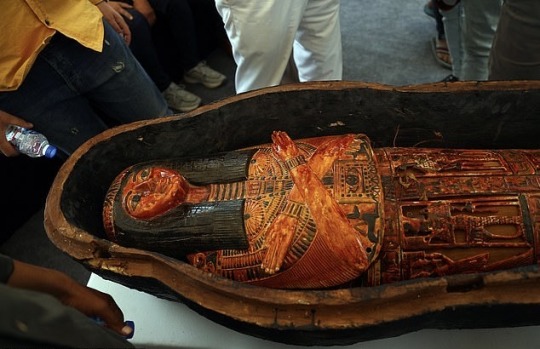

3,400-Year-Old Ancient Egyptian Cemetery Found With Colorful Coffins
Archaeologists have uncovered an Ancient Egyptian cemetery dated to more than 3,000 years ago containing the colorful coffin of a high priest's daughter and preserved mummies, among hundreds of other finds.
Researchers unearthed the cemetery at the Tuna el-Gebel necropolis, located almost 170 miles south of Cairo in Minya Governate, Egypt's Ministry of Tourism and Antiquities announced in a statement on Sunday.
The cemetery, which dates back to the New Kingdom (16th-11th centuries B.C.) of ancient Egypt, was used as a burial ground for senior officials and priests during the period, according to archaeologists.
The cemetery was uncovered during excavations that began last August in the Al-Ghuraifa area of Tuna El-Gebel and features "many tombs" that have been carved into rock.
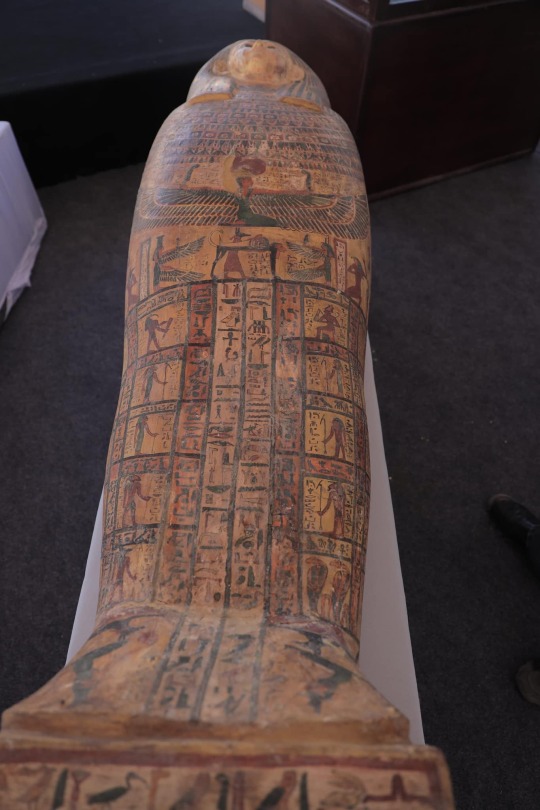
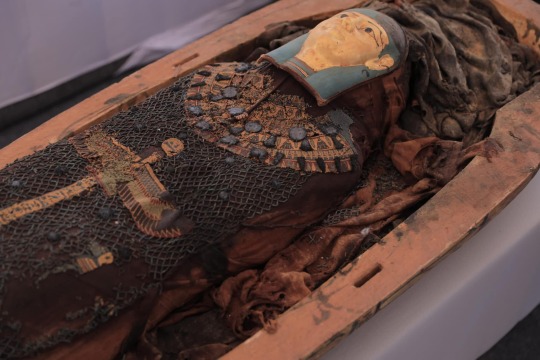

Researchers have also made hundreds of archaeological finds at the site, including stone and wooden coffins—some of which contained mummies—amulets, ornaments and funerary figurines.
One of the most notable finds at the cemetery is a colorful, engraved coffin belonging to the daughter of a high priest of the ancient Egyptian god Djehuti, often referred to as Thoth.
This deity, commonly depicted as a man with the head of an ibis or baboon, was a key figure in ancient Egyptian mythology and played several prominent roles. For example, Thoth was credited with the invention of writing and is also believed to have served as a representative of the sun god Ra.
Next to the coffin of the high priest's daughter, archaeologists found two wooden boxes containing her canopic jars, as well as a complete set of "ushabti" statues.
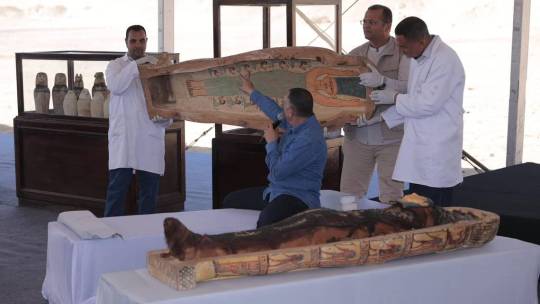
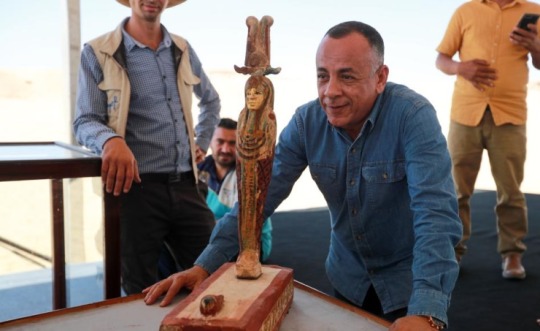
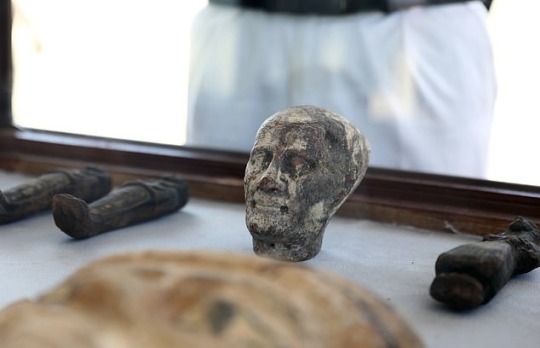
Canopic jars were vessels used by the ancient Egyptians to store the organs removed from the body in the process of mummification—the lungs, liver, intestines and stomach—in order to preserve them for the afterlife.
Ushabti statues, meanwhile, were figurines used in ancient Egyptian funerary practices that were placed in tombs in the belief that they would act as servants for the deceased in the afterlife.
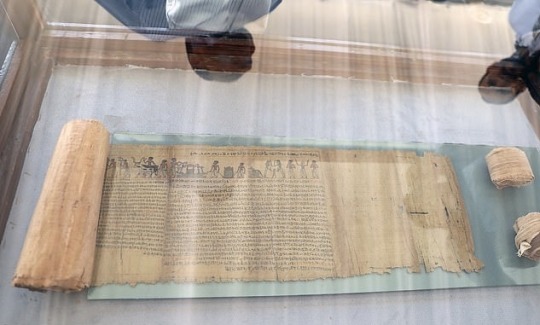
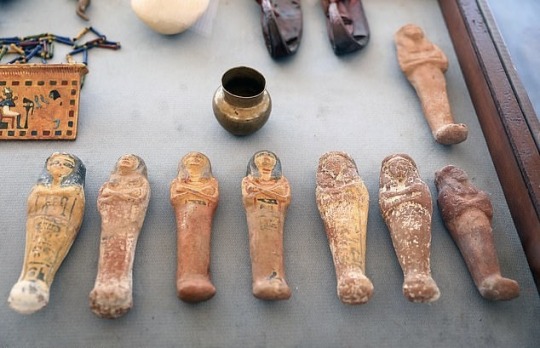
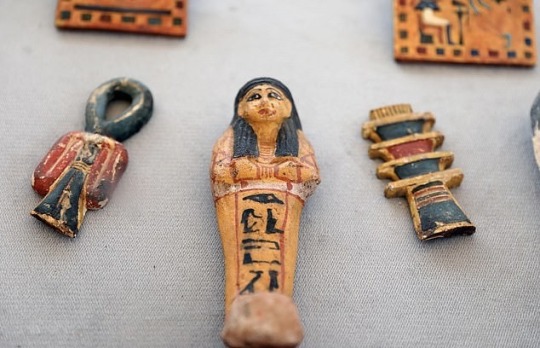
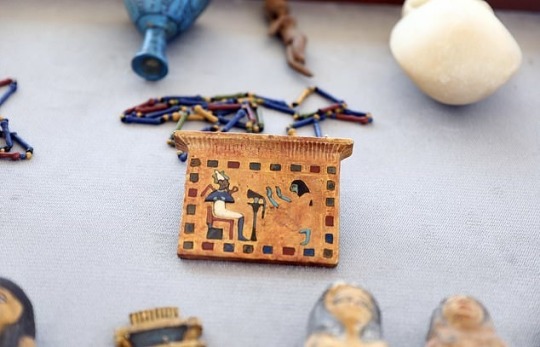
Archaeologists also made another particularly fascinating find at the New Kingdom cemetery: a complete and well-preserved papyrus scroll measuring approximately 42-49 feet in length that features information related to the Book of the Dead.
The Book of the Dead is a collection of ancient Egyptian funerary texts consisting of spells or magic formulas that were placed in tombs. These texts were thought to protect and aid the deceased in the afterlife. They were generally written on papyrus, a material similar to thick paper that was used as a writing surface in ancient times.
Mostafa Waziri, secretary general of the Supreme Council of Antiquities, said in the statement that the discovery of the cemetery is an "important" find.
By Aristos Georgiou.
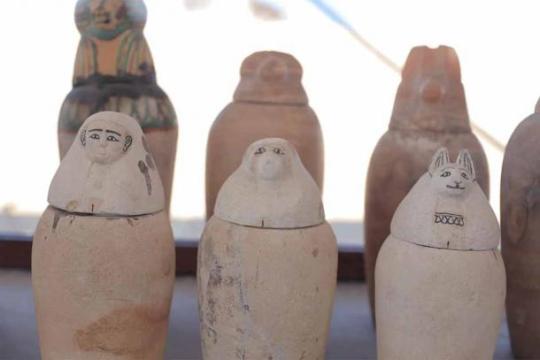
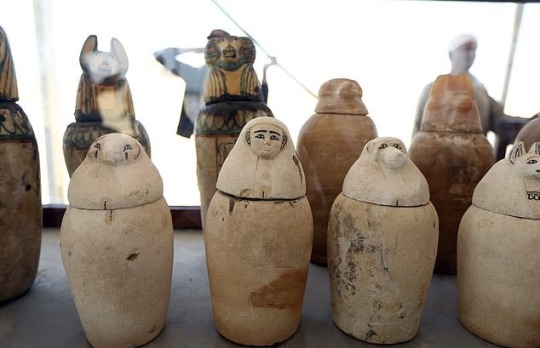
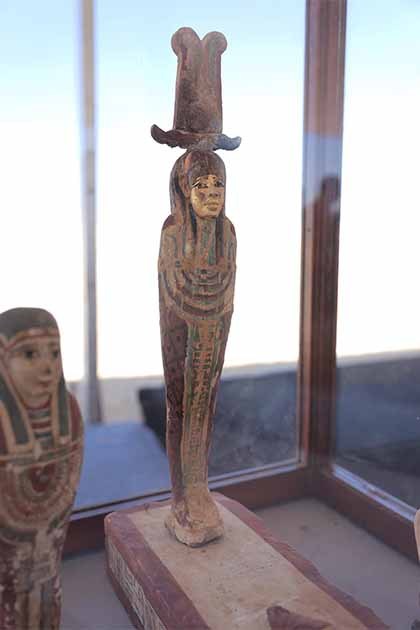

#3400-Year-Old Ancient Egyptian Cemetery Found With Colorful Coffins#Tuna el-Gebel necropolis#Minya Governate#ancient grave#ancient tomb#ancient cemetery#ancient necropolis#book of the dead#canopic jars#Egyptian god Djehuti#high priest#high priestess#ancient artifacts#archeology#archeolgst#history#history news#ancient history#ancient culture#ancient civilizations#ancient egypt#egyptian history#egyptian gods#egyptian mythology#egyptian art
192 notes
·
View notes
Text





The burial mound of the Krivichi is a union of East Slavic tribes that existed in the VIII-XII centuries. A distinctive feature of the graves of the Krivichi are long mounds – shaft-shaped earthen mounds, which can be seen in my photos. Almost all long mounds contain burial sites according to the rite of corpse-burning
#spring#april#nature#aesthetic#cottagecore#naturecore#nature photography#nature aesthetic#photography#cottagecore aesthetic#forest#woods#wood#spring forest#spring woods#cemetery#ancient cemetery#history#belarusian history#ancient history#spring photography#spring aesthetic#spring cottagecore
42 notes
·
View notes
Text
Nice find. I love that fretwork cartonnage. Beautifully done.
24 notes
·
View notes
Text


#geography#my polls#polls#random polls#tumblr polls#geography polls#incognito polls#fun polls#ancient ruins#persepolis#great zimbabwe#chichén itzá#leptis magna#rapa nui#bhangarh fort#angkor wat#hadrians wall#cappadocia#khalid nabi cemetery#lamanai temple
16 notes
·
View notes
Text

Ancient Greek terracotta sarcophagus from the Ancient Greek colony of Kamarina, in modern Sicily. End of the 6th century BCE.
Now in the Castello Ursino, in Catania, Sicily
Feb. 2024
#sarcophogus#catania#sicily#sicilia#ancient greek#magna grecia#cemetery#tomb#original photography#photography#taphophile#taphophilia#lensblr#photographers on tumblr#italy#italia#archeology#archaeology#artifact#museum#wanderingjana
33 notes
·
View notes